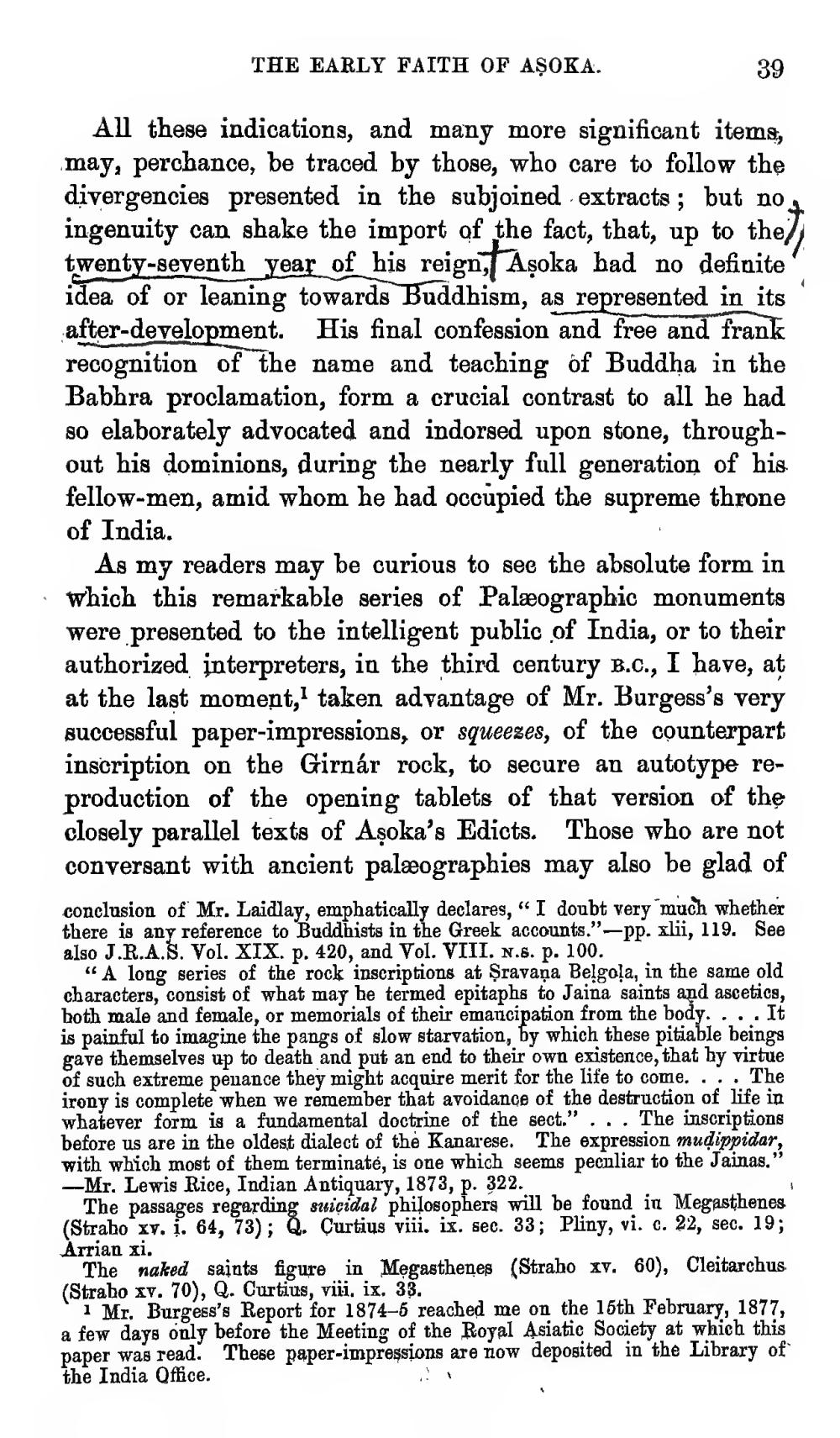________________
THE EARLY FAITH OF ASOKA.
39
All these indications, and many more significant items, may, perchance, be traced by those, who care to follow the divergencies presented in the subjoined extracts; but no ingenuity can shake the import of the fact, that, up to the twenty-seventh year of his reign, Aşoka had no definite' idea of or leaning towards Buddhism, as represented in its after-development. His final confession and free and frank recognition of the name and teaching of Buddha in the Babhra proclamation, form a crucial contrast to all he had so elaborately advocated and indorsed upon stone, throughout his dominions, during the nearly full generation of his fellow-men, amid whom he had occupied the supreme throne of India.
As my readers may be curious to see the absolute form in which this remarkable series of Palæographic monuments were presented to the intelligent public of India, or to their authorized interpreters, in the third century B.C., I have, at at the last moment, taken advantage of Mr. Burgess's very successful paper-impressions, or squeezes, of the counterpart inscription on the Girnár rock, to secure an autotype reproduction of the opening tablets of that version of the closely parallel texts of Asoka's Edicts. Those who are not conversant with ancient palæographies may also be glad of conclusion of Mr. Laidlay, emphatically declares, “ I doubt very much whether there is any reference to Buddhists in the Greek accounts.”—pp. xlii, 119. See also J.R.A.S. Vol. XIX. p. 420, and Vol. VIII. n.8. p. 100.
"A long series of the rock inscriptions at Sravana Belgola, in the same old characters, consist of what may be termed epitaphs to Jaina saints and ascetics, both male and female, or memorials of their emancipation from the body. ... It is painful to imagine the pangs of slow starvation, by which these pitiable beings gave themselves up to death and put an end to their own existence, that hy virtue of such extreme penance they might acquire merit for the life to come. ... The irony is complete when we remember that avoidance of the destruction of life in whatever form is a fundamental doctrine of the sect." ... The inscriptions before us are in the oldest dialect of the Kanarese. The expression mudippidar, with which most of them terminaté, is one which seems peculiar to the Jainas." -Mr. Lewis Rice, Indian Antiquary, 1873, p. 322.
The passages regarding suicidal philosophers will be found in Megasthenes (Strabo xv. ì. 64, 73); Q. Curtius viii. ix. sec. 33; Pliny, vi. c. 22, sec. 19; Àrrian xi.
The naked saints figure in Megasthenes (Straho xv. 60), Cleitarchus. (Strabo xv. 70), Q. Curtius, viii, ix. 33.
i Mr. Burgess's Report for 1874-5 reached me on the 15th February, 1877, a few days only before the Meeting of the Royal Asiatic Society at which this paper was read. These paper-impressions are now deposited in the Library of the India Office.




